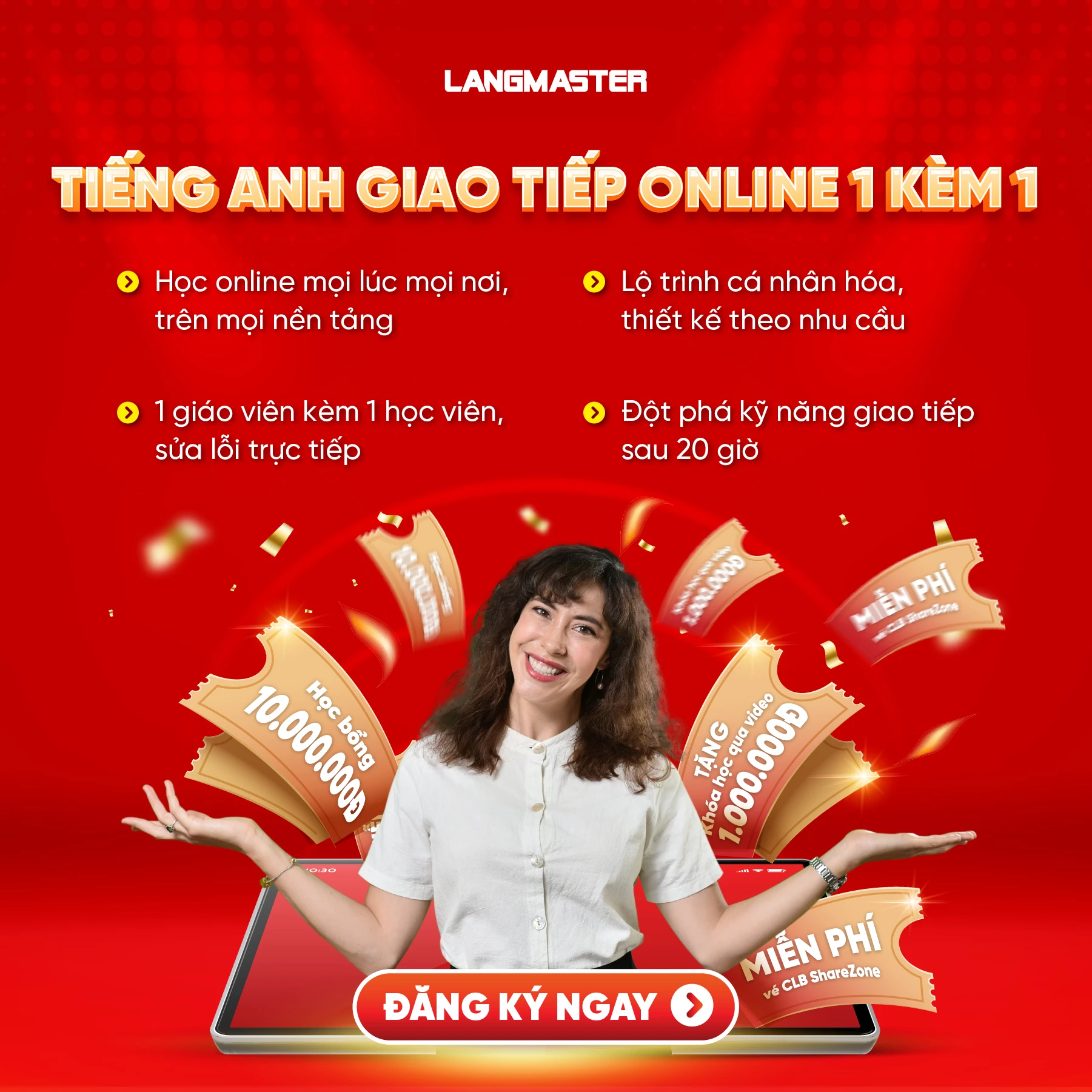Tiếng anh giao tiếp online
Giải đề IELTS Reading: Advertising needs attention [full answers]
Mục lục [Ẩn]
Trong quá trình ôn luyện IELTS Reading, việc thực hành trực tiếp với các đề thi thật là một phương pháp hiệu quả để cải thiện kỹ năng và nâng cao band điểm nhanh chóng. Bài viết này sẽ hướng dẫn bạn chinh phục trọn vẹn đề IELTS Reading “Advertising needs attention”, bao gồm đề bài, hệ thống câu hỏi, đáp án cùng phần giải thích chi tiết. Đây chắc chắn sẽ là nguồn tài liệu giá trị giúp bạn rèn luyện, củng cố kỹ năng đọc hiểu và tự tin tiến gần hơn đến mục tiêu điểm số trong kỳ thi IELTS.
1. Đề thi thật IELTS Reading “Advertising needs attention”
Reading Passage 1
Advertising Needs Attention
A. The harder advertisers try to get your attention, the more your brain ignores them.
B. Rane Raymond, a consumer psychologist at the University of Wales in Bangor, is carefully holding and gazing at a bottle of Chillz mineral water like a baby. Despite being made of clear plastic, it looks as if it has been carved from ice. This simple feature means shoppers are drawn to this bottle over the others on the shelf and cannot resist picking it up, Raymond says. She studies the subtle factors that motivate us to buy what we buy and advises big companies on how powerful an advertisement is, and how it could be designed to stick more firmly in a consumer's memory. Most of all, she works out how to attract your attention.
C. In today's fast-paced consumer world, attention is in short supply. Whether we are taking our time shopping in a mall, surfing the Internet for information, or just watching television as a form of passive entertainment, consumers are surrounded by messages every 15 seconds of our waking lives, according to some estimates. Last year, companies worldwide spent $401 billion on advertising, according to the independent World Advertising Research Centre in the UK. But as the graveyard of failed products shows, they usually get it wrong.
D. Nine out of 10 new products meet an early death, says Jamie Rayner, director of research at ID Magasin, a UK consultancy specializing in consumer behavior. And the reason, he explains, is simple: conventional advertising has ceased to work. Rayner and his colleagues have measured how consumers, particularly regular commuters, react to advertising, and their conclusion should alarm many executives. They used a camera embedded in a pair of glasses to record their gaze as they glanced at advertisements on their journey to and from work. After analyzing the recordings and questioning the subjects, they found that most of the advertisements made no impression at all: only about one percent could be recalled without prompting. It seems that although we may be looking at brands and advertisements all day long, most of the time we're not taking anything in.
E. Raymond thinks she knows why. Her move from research in visual processing into consumer psychology began in the early 1990s when she discovered some strange behaviors in the brain's attentional system. She showed people a stream of letters and numbers on a screen and asked them to look out for a letter X. When she asked her volunteers afterward what they had seen, she found that if the X appeared up to half a second or so after the white letter, or vice versa, people failed to see it. She concluded that if something catches your attention, your brain is blind to anything else for a short period afterward. She called this effect the "attentional blink." In short, the reason most advertising doesn't work is that we're in a severe state of attentional overload. Unless advertising is presented in a way the brain can absorb, it is simply not seen, Raymond says.
F. So what does this mean for advertisers? A typical television advertisement consists of a series of attention-grabbing images interspersed with the product. But unless the scenes in the advertisement are cut to take account of attentional blinks, the brain is likely to ignore the information the advertiser wants to get across. The same applies to magazine advertisements, where viewers often register the main image but fail to pick up on the secondary images—the bits advertisers often desperately want us to see. Raymond says advertisers consistently fail to consider how easily the brain misses the point. It's not that they haven't realized that the space and time they have to get their message across has shrunk. But advertisers respond by cramming in even more complex information. Raymond is opposed to this and her advice is simple: deliver your message in a straightforward manner and do so slowly, gently, and concisely.
G. After her research on the attentional blink, she wondered whether attention would be linked to other processes in the brain, particularly emotion. Could our attentional state influence whether we like or dislike a brand, for example? Today, companies are hugely interested in the emotional value of their brands as they want their products to make us feel good. It is well known that if something elicits positive emotions, then you are more likely to take notice of it. But Raymond's further research also demonstrates that if people are distracted by an image or a brand when performing an intellectually demanding task, they tend to instantly dislike the brands, regardless of its emotional value. So for example, if you are reading a web page when a banner advertisement starts flashing, or are watching a film with intrusive product placement, it is probable you will come to dislike the brand, whatever it is.
H. This contradicts the more-exposure-the-better rule most of the industry follows, says Raymond, and means that advertising can backfire horribly. Advertisers tend to buy as much exposure for a product as they can, through television and radio commercials, billboards, whatever they think will attract their target audiences. But again, Raymond has found that this doesn't necessarily work in their favor. Perhaps the most dangerous time, says Raymond, is the holiday season when advertisers are madly competing to grab people's attention. "Marketers don't realize that humans digest information like they do food. Once they are full, if they are shown any more food, they're disgusted," she says.
Question 1-7: Do the following statements agree with the information given in Reading Passage 1?
- Write TRUE if the statement agrees with the information.
- Write FALSE if the statement contradicts the information.
- Write NOT GIVEN if there is no information on this.
1. Jane Raymond states that Chillz mineral water is packaged in a way that is unattractive to consumers.
2. Consumers are still exposed to more advertising through television commercials than through the medium of the internet.
3. Jamie Rayner says that people are no longer influenced by traditional advertisements.
4. According to Jamie Rayner, the reason that most products are discontinued is that advertising fails to attract consumers.
5. Jane Raymond believes that commercials should be simpler in their content.
6. Advertisements showing unfamiliar brands affect a person's concentration more than ones with familiar brands.
7. Jane Raymond suggests that a product should be advertised in as many ways as possible.
Questions 8-13: Answer the questions below with NO MORE THAN THREE WORDS from the passage
8. What group of consumers were specifically targeted in Jamie Rayner's research?
9. What subject did Jane Raymond study before focusing on the behavior of consumers?
10. According to the writer, what important aspect of an advertisement in print do many people fail to notice?
11. According to the writer, what do companies today want their products to have in order to make consumers feel positive about themselves?
12. What does Jane Raymond say will annoy someone watching?
13. According to Jane Raymond, when do advertisers promote their products most fiercely?
Nguồn: Internet
>> Xem thêm:
- Giải đề IELTS Reading: BUILDING A CASTLE [Full answers]
- Giải đề IELTS Reading: A brief introduction to pepper [full answers]
2. Đáp án đề IELTS Reading “Advertising needs attention”

- Bảng đáp án cụ thể để đối chiếu:
|
Questions |
Answers |
|
1 |
False |
|
2 |
Not given |
|
3 |
True |
|
4 |
False |
|
5 |
True |
|
6 |
Not given |
|
7 |
False |
|
8 |
commuters |
|
9 |
consumer psychology |
|
10 |
secondary images |
|
11 |
emotional value |
|
12 |
image and brand |
|
13 |
the holiday season |
- Giải thích đáp án câu 1 đến 7: TRUE, FALSE, NOT GIVEN
Câu 1 – False:
Trong đoạn B, tác giả mô tả chai nước Chillz: “This simple feature means shoppers are drawn to this bottle over the others on the shelf and cannot resist picking it up.” Như vậy, rõ ràng bao bì này hấp dẫn người tiêu dùng, trái ngược hoàn toàn với nhận định trong câu hỏi là “unattractive”. Vì vậy, đáp án chính xác là False.
Câu 2 – Not Given:
Chuyển sang đoạn C, bài viết có đề cập: “Whether we are … surfing the Internet … or just watching television, consumers are surrounded by messages every 15 seconds…” Tuy nhiên, tác giả chỉ liệt kê các nguồn quảng cáo mà không so sánh xem TV hay Internet có lượng quảng cáo nhiều hơn. Do đó, đáp án phải là Not Given.
Câu 3 – True:
Ở đoạn D, Jamie Rayner khẳng định: “The reason… is simple: conventional advertising has ceased to work.” Điều này đồng nghĩa với việc quảng cáo truyền thống không còn ảnh hưởng tới người tiêu dùng. Vì vậy, ta chọn True.
Câu 4 – False:
Cũng trong đoạn D, có câu: “Nine out of 10 new products meet an early death… because conventional advertising has ceased to work.” Như vậy, nguyên nhân sản phẩm thất bại là do toàn bộ hình thức quảng cáo truyền thống đã không còn hiệu quả, chứ không phải vì quảng cáo không “thu hút” người tiêu dùng như câu hỏi gợi ý. Vì vậy, đáp án là False.
Câu 5 – True:
Tiếp theo, đoạn F cho biết: “Her advice is simple: deliver your message in a straightforward manner and do so slowly, gently, and concisely.” Ở đây, Jane Raymond khuyên rằng quảng cáo nên được trình bày đơn giản, súc tích và rõ ràng. Do đó, đáp án chính xác là True.
Câu 6 – Not Given:
Trong đoạn G, tác giả phân tích rằng quảng cáo xen ngang (ví dụ banner flashing, product placement) có thể khiến người xem cảm thấy khó chịu và thậm chí ghét thương hiệu. Tuy nhiên, không có thông tin nào so sánh giữa quảng cáo của nhãn hàng lạ và nhãn hàng quen thuộc. Vì vậy, ta chọn Not Given.
Câu 7 – False:
Ở đoạn H, Raymond nói rõ: “Advertisers tend to buy as much exposure as they can… But again, Raymond has found that this doesn’t necessarily work in their favor.” Điều này chứng minh bà phản đối việc quảng cáo tràn lan, ngược lại với gợi ý trong câu hỏi. Vậy nên, đáp án chính xác là False.
- Giải thích đáp án câu 8 đến câu 13: Short Answer Questions
Câu 8 – commuters:
Đoạn D cho biết Rayner và cộng sự đã nghiên cứu phản ứng của người tiêu dùng, “particularly regular commuters”. Như vậy, nhóm khách hàng mục tiêu ở đây chính là commuters.
Câu 9 – visual processing:
Ở đoạn E, bài viết nhắc tới: “Her move from research in visual processing into consumer psychology began in the early 1990s.” Điều này nghĩa là trước khi nghiên cứu tâm lý tiêu dùng, Jane Raymond học về visual processing.
Câu 10 – secondary images:
Trong đoạn F, tác giả chỉ ra rằng: “…viewers often register the main image but fail to pick up on the secondary images.” Vì thế, chi tiết mà nhiều người bỏ qua trong quảng cáo in chính là secondary images.
Câu 11 – emotional value:
Đến đoạn G, tác giả viết: “Today, companies are hugely interested in the emotional value of their brands as they want their products to make us feel good.” Như vậy, điều mà các công ty mong muốn sản phẩm của họ sở hữu chính là emotional value.
Câu 12 – image and brand:
Vẫn ở đoạn G, Raymond nhận thấy rằng: “…if people are distracted by an image or a brand when performing an intellectually demanding task, they tend to instantly dislike the brands.” Do đó, yếu tố gây khó chịu cho người xem chính là image and brand.
Câu 13 – the holiday season:
Cuối cùng, trong đoạn H, tác giả chỉ ra: “Perhaps the most dangerous time… is the holiday season when advertisers are madly competing…” Điều này có nghĩa là thời điểm quảng cáo diễn ra sôi nổi và dữ dội nhất chính là the holiday season.
>> Xem thêm:
- IELTS Reading Tips: Bí quyết luyện Reading chinh phục mọi dạng bài
- Thời gian làm Reading IELTS: Chiến lược phân bổ và mẹo làm bài hiệu quả
3. Từ vựng quan trọng trong đề IELTS Reading “Advertising needs attention”

Trong quá trình luyện Reading, việc trau dồi từ vựng IELTS một cách đều đặn và có phương pháp hiệu quả đóng vai trò then chốt, đặc biệt khi bạn thực hành với các đề mẫu. Danh sách dưới đây tổng hợp những từ/cụm từ quan trọng trong bài IELTS Reading “Advertising needs attention”, bao gồm cả thuật ngữ chuyên môn xuất hiện trong đề và những từ có khả năng thường xuyên lặp lại ở các đề Reading khác:
|
Từ vựng |
Dịch nghĩa |
Ví dụ trong bài |
|
consumer psychologist |
nhà tâm lý học tiêu dùng |
Rane Raymond, a consumer psychologist at the University of Wales in Bangor, is carefully holding and gazing at a bottle of Chillz mineral water like a baby. |
|
subtle |
tinh tế, khó nhận ra |
She studies the subtle factors that motivate us to buy what we buy. |
|
attentional blink |
hiện tượng chớp mắt chú ý |
She called this effect the 'attentional blink.' |
|
overload |
quá tải |
In short, the reason most advertising doesn't work is that we're in a severe state of attentional overload. |
|
exposure |
sự phơi bày / mức độ tiếp xúc (quảng cáo) |
Advertisers tend to buy as much exposure for a product as they can, through television and radio commercials, billboards,... |
|
recall |
ghi nhớ, hồi tưởng |
After analyzing the recordings and questioning the subjects, they found that most of the advertisements made no impression at all: only about one percent could be recalled without prompting. |
|
distracted |
bị phân tâm |
But Raymond's further research also demonstrates that if people are distracted by an image or a brand when performing an intellectually demanding task, they tend to instantly dislike the brands. |
|
intrusive |
xen ngang, gây phiền toái |
So for example, if you are reading a web page when a banner advertisement starts flashing, or are watching a film with intrusive product placement, it is probable you will come to dislike the brand. |
|
disgusted |
ghê tởm, chán ghét |
Once they are full, if they are shown any more food, they're disgusted. |
|
commuters |
người đi lại hằng ngày (đi làm, đi học) |
Rayner and his colleagues have measured how consumers, particularly regular commuters, react to advertising. |
|
visual processing |
xử lý hình ảnh (thị giác) |
Her move from research in visual processing into consumer psychology began in the early 1990s when she discovered some strange behaviors in the brain's attentional system. |
|
secondary images |
hình ảnh phụ |
The same applies to magazine advertisements, where viewers often register the main image but fail to pick up on the secondary images—the bits advertisers often desperately want us to see. |
|
emotional value |
giá trị cảm xúc |
Today, companies are hugely interested in the emotional value of their brands as they want their products to make us feel good. |
|
brand |
thương hiệu |
Could our attentional state influence whether we like or dislike a brand, for example? |
|
conventional advertising |
quảng cáo truyền thống |
And the reason, he explains, is simple: conventional advertising has ceased to work. |
|
sophisticated |
tinh vi, phức tạp |
Writing became more sophisticated and allowed people to maintain records of the harvest and taxes. |
|
failed products |
sản phẩm thất bại |
But as the graveyard of failed products shows, they usually get it wrong. |
|
attention-grabbing |
thu hút sự chú ý |
A typical television advertisement consists of a series of attention-grabbing images interspersed with the product. |
>> Xem thêm:
- Top 10 sách học từ vựng IELTS hay và hiệu quả nhất cho người mới
- Top 10 App Học Từ Vựng IELTS Miễn Phí Cho Người Mới Bắt Đầu
4. Bứt phá kỳ thi IELTS cùng khóa học online của Langmaster
Thực tế, nhiều bạn ôn luyện IELTS Reading thường chỉ tập trung làm đề mà bỏ qua việc phân tích chiến lược tư duy đằng sau đáp án. Chính sự thiếu định hướng này khiến việc học dễ rơi vào vòng lặp “làm – chấm – sai” mà không cải thiện rõ rệt. Nếu có một lộ trình học rõ ràng và sự hướng dẫn từ giảng viên, bạn sẽ không chỉ giải nhanh hơn mà còn hiểu sâu cách tư duy trong từng dạng bài. Đây cũng là lý do ngày càng nhiều thí sinh lựa chọn các khóa học IELTS online uy tín để tiết kiệm thời gian và đạt kết quả bền vững hơn.
Với hơn 16 năm đồng hành cùng người học tiếng Anh, Langmaster mang đến các khóa học IELTS online được thiết kế phù hợp với từng năng lực đầu vào và mục tiêu cụ thể. Đây là những lý do khiến hàng nghìn học viên tin tưởng lựa chọn:
- Sĩ số lớp nhỏ (7–10 học viên): Tối đa cơ hội trao đổi với giảng viên, đồng thời nhận được phản hồi chi tiết và cá nhân hóa.
- Lộ trình học riêng: Xây dựng dựa trên đánh giá trình độ ban đầu, có báo cáo tiến độ định kỳ giúp bạn nắm rõ sự cải thiện của bản thân.
- Giảng viên IELTS 7.5+: Dày dạn kinh nghiệm, cam kết chấm chữa trong vòng 24h và luôn theo sát quá trình học.
- Thi thử định kỳ: Mô phỏng sát đề thi thật, kèm phân tích điểm mạnh – điểm yếu để học viên biết cách cải thiện.
- Cam kết đầu ra: Nếu chưa đạt band điểm mục tiêu, học viên được hỗ trợ học lại miễn phí.
- Linh hoạt học online: Có video ghi lại buổi học, tài liệu ôn tập đa dạng và dịch vụ coaching 1-1 chuyên sâu.
- Hệ sinh thái hỗ trợ: Kho bài tập, tài liệu trực tuyến cùng cố vấn học tập luôn theo sát từng bước.
Đặc biệt, Langmaster còn mang đến lớp học thử miễn phí với hình thức nhóm nhỏ. Đây là cơ hội tuyệt vời để bạn trực tiếp trải nghiệm phương pháp giảng dạy và tự đánh giá mức độ phù hợp trước khi quyết định đăng ký chính thức.
Kết luận:
Trên đây là toàn bộ đáp án đề thi IELTS Reading “Advertising needs attention” kèm giải thích chi tiết và từ vựng quan trọng. Việc luyện tập với đề thi thật không chỉ giúp bạn rèn kỹ năng xử lý từng dạng câu hỏi mà còn bổ sung thêm vốn từ học thuật cần thiết cho kỳ thi. Hy vọng tài liệu này sẽ trở thành trợ thủ đắc lực, giúp bạn tự tin nâng cao khả năng đọc hiểu và tiến gần hơn tới mục tiêu band điểm mong muốn trong IELTS.
Nội Dung Hot
KHÓA TIẾNG ANH GIAO TIẾP 1 KÈM 1
- Học và trao đổi trực tiếp 1 thầy 1 trò.
- Giao tiếp liên tục, sửa lỗi kịp thời, bù đắp lỗ hổng ngay lập tức.
- Lộ trình học được thiết kế riêng cho từng học viên.
- Dựa trên mục tiêu, đặc thù từng ngành việc của học viên.
- Học mọi lúc mọi nơi, thời gian linh hoạt.

KHÓA TIẾNG ANH GIAO TIẾP ONLINE
- Học theo nhóm (8-10 người), môi trường học tương tác và giao tiếp liên tục.
- Giáo viên đạt tối thiểu 7.0 IELTS/900 TOEIC.
- Học online chất lượng như offline.
- Chi phí tương đối, chất lượng tuyệt đối.
- Kiểm tra đầu vào, đầu ra và tư vấn lộ trình miễn phí

KHÓA TIẾNG ANH TRẺ EM
- Giáo trình Cambridge kết hợp với Sách giáo khoa của Bộ GD&ĐT hiện hành
- 100% giáo viên đạt chứng chỉ quốc tế IELTS 7.0+/TOEIC 900+
- X3 hiệu quả với các Phương pháp giảng dạy hiện đại
- Lộ trình học cá nhân hóa, con được quan tâm sát sao và phát triển toàn diện 4 kỹ năng
Bài viết khác

Nâng cao trình độ tiếng Anh của bạn với bộ tài liệu miễn phí từ Langmaster! Đăng ký ngay để bắt đầu hành trình chinh phục tiếng Anh!

Kỳ nghỉ hè 2024 sắp kết thúc, thời gian trở lại trường học của các mầm non đất nước ngày càng gần. Vậy lịch đi học lại sau hè 2024 của 63 tỉnh thành là khi nào?

Bạn muốn hiểu rõ hơn về cấu trúc bài thi Cambridge. Hãy đăng ký "Thi Thử Tiếng Anh Cambridge Miễn Phí Tại Langmaster - Nhận Góp Ý Từ Giảng Viên” ngay hôm nay.

Bạn đang có nhu cầu tìm khóa học tiếng Anh giao tiếp cho người lớn tuổi để đi nước ngoài? Tham khảo ngay bài viết dưới đây cùng tiếng Anh giao tiếp Langmaster nhé!

Review top 5+ Khóa học tiếng Anh thương mại cho doanh nghiệp: tham khảo các khóa học tại Langmaster, EIV, Skype English, AROMA, Axcela, Wall Street English,...







 16+ năm kinh nghiệm,
800.000+ học viên
16+ năm kinh nghiệm,
800.000+ học viên


